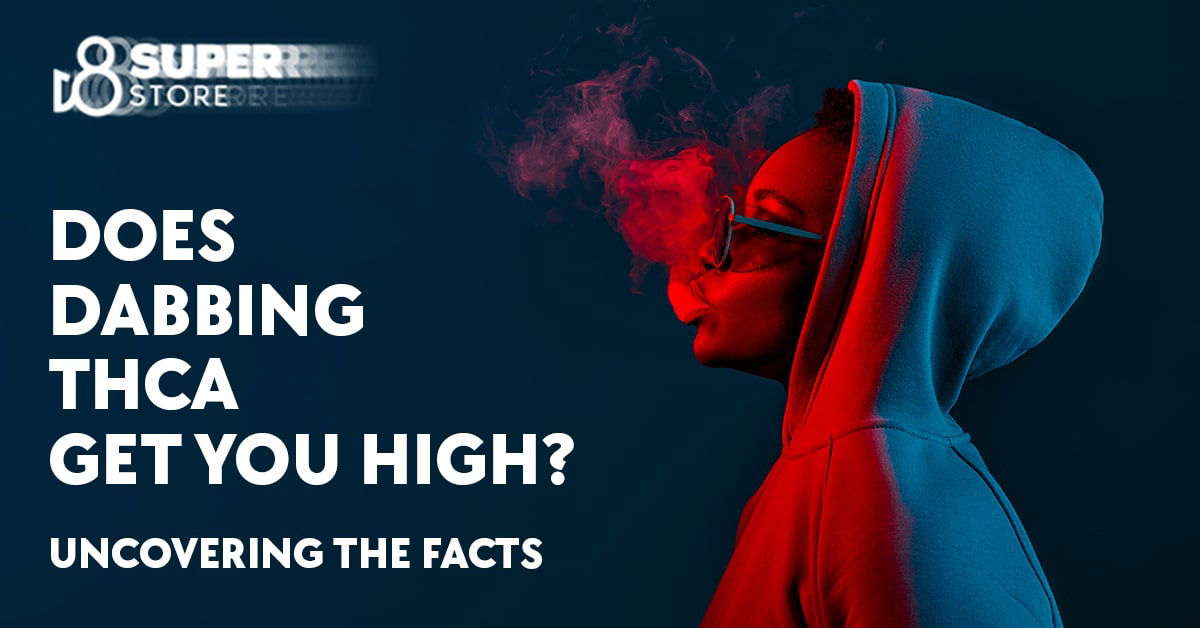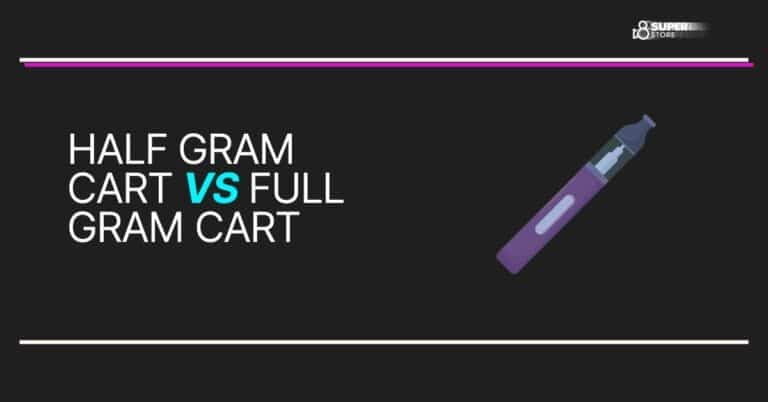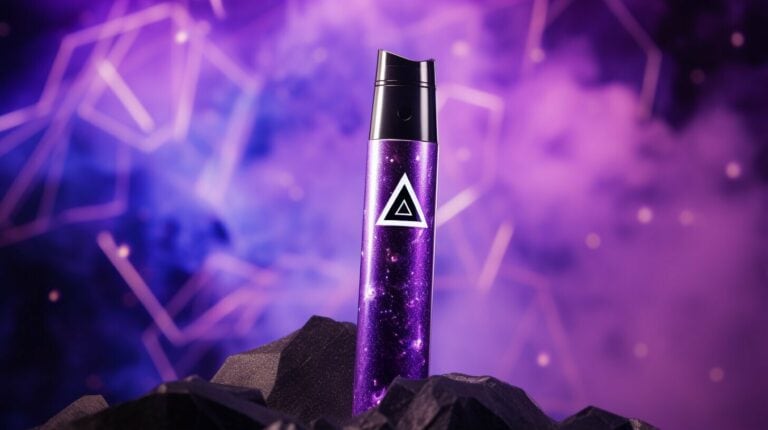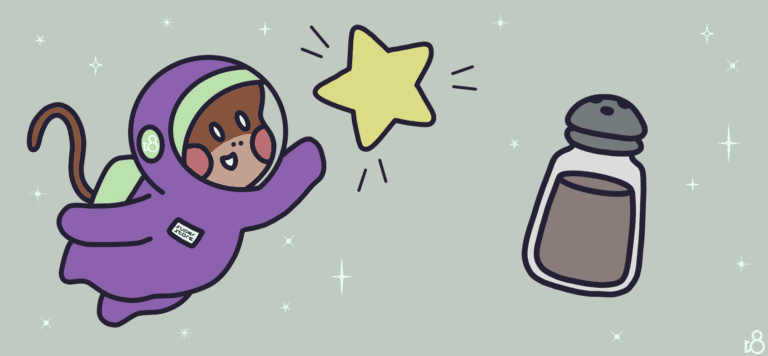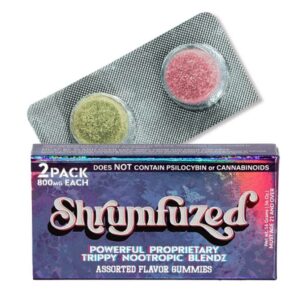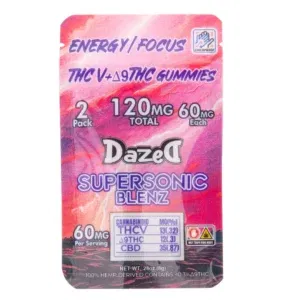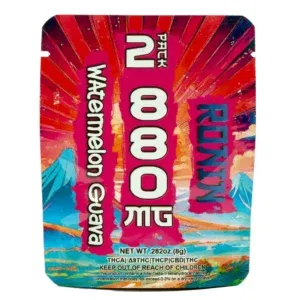Does Dabbing THCa Get You High? Uncovering the Facts
Cannabis has everyone buzzing, especially with cool new ways to enjoy it like dabbing. Imagine firing up a super potent form of cannabis, THCa (for those who like the nitty-gritty, it’s short for tetrahydrocannabinolic acid), until it becomes a vapor you breathe in. It zips into your lungs quicker than a rabbit running for the hills. The question on everyone’s mind is: does taking a dab of THCa really take you to cloud nine?
THCa is the precursor to THC (tetrahydrocannabinol), the psychoactive compound responsible for the “high” marijuana users experience. In its raw form, THCa does not possess any psychoactive properties, but when exposed to heat, it undergoes a chemical reaction called decarboxylation, turning into THC. This process raises the question of whether or not THCa retains its non-psychoactive nature during dabbing and if users can expect to get high from it.
Key Takeaways
- Dabbing THCa may result in psychoactive effects due to decarboxylation into THC.
- THCa has potential benefits separate from THC, but its transformation during dabbing is still under investigation.
- Understanding and navigating the complex world of cannabinoids is essential for informed cannabis use.
Understanding THCa

Chemical Structure
THCa (tetrahydrocannabinolic acid) is a cannabinoid acid found naturally in the raw, unheated cannabis plant. The chemical structure of THCa is characterized by a carboxyl group (-COOH) attached to the rest of the molecule. This carboxyl group is responsible for the acidic properties of THCa, and it plays a crucial role in its conversion to THC, the primary psychoactive compound found in cannabis.
Cannabinoid Acid
As a cannabinoid acid, THCa is a precursor to other cannabinoids, such as THC. THCa is not psychoactive in its natural form. When heated, THCa undergoes a process called decarboxylation, during which the carboxyl group is removed. This process results in the formation of THC, which is known for its psychoactive effects and can lead to a feeling of “high”.
Decarboxylation Process:
- Heating THCa (e.g., by smoking, vaporizing, or cooking)
- Carboxyl group is removed
- Formation of THC
To summarize, THCa is an important cannabinoid acid found in raw cannabis plants. Its chemical structure is characterized by a carboxyl group that gives the molecule its acidic properties. The decarboxylation process, triggered by heat, converts THCa into THC, which is responsible for the psychoactive effects typically associated with cannabis consumption. In its natural form, THCa does not produce a high, but understanding this cannabinoid and its properties is essential to comprehending the complex nature of cannabis and its various compounds.
Dabbing THCa

Concentrates and Diamonds
Dabbing is a method of consuming cannabis concentrates, which are highly potent extracts from the cannabis plant. THCa, or tetrahydrocannabinolic acid, is the inactive precursor to THC, the well-known psychoactive compound that causes the “high” associated with cannabis use. THCa diamonds are a type of concentrate that consists of almost pure THCa, making them extremely potent.
When you apply heat to THCa in a process called decarboxylation, it converts to THC, becoming psychoactive. This process is crucial for the dabbing method since THCa in its raw form does not produce a high. THCa diamonds, however, have high levels of potency due to their concentration and can produce a much stronger effect when dabbed compared to traditional cannabis flower.
Dab Rig and Nail
To perform dabbing, you need a dab rig and a nail, which may be made of materials such as quartz, titanium, or ceramic. A dab rig is a specialized water pipe designed for consuming cannabis concentrates, while the nail serves as a heated surface where the concentrate is vaporized upon contact. A user applies heat to the nail using a torch, usually until it reaches a very high temperature. Afterward, the concentrate, such as THCa diamonds, is placed onto the hot nail, instantly vaporizing it.
The vapor produced from dabbing is then inhaled through the dab rig, providing the user with a potent and efficient method of consuming cannabis concentrates. This method allows consumers to experience the full effects of THCa diamonds, as the high temperature ensures the decarboxylation process occurs, converting THCa to THC and inducing the psychoactive effects.
In summary, dabbing THCa can get you high, but it is essential to apply heat to induce the decarboxylation process that converts THCa to THC. THCa diamonds are potent concentrates, and when dabbed using a rig and nail, they provide a powerful and efficient way of consuming cannabis.
THCa vs THC
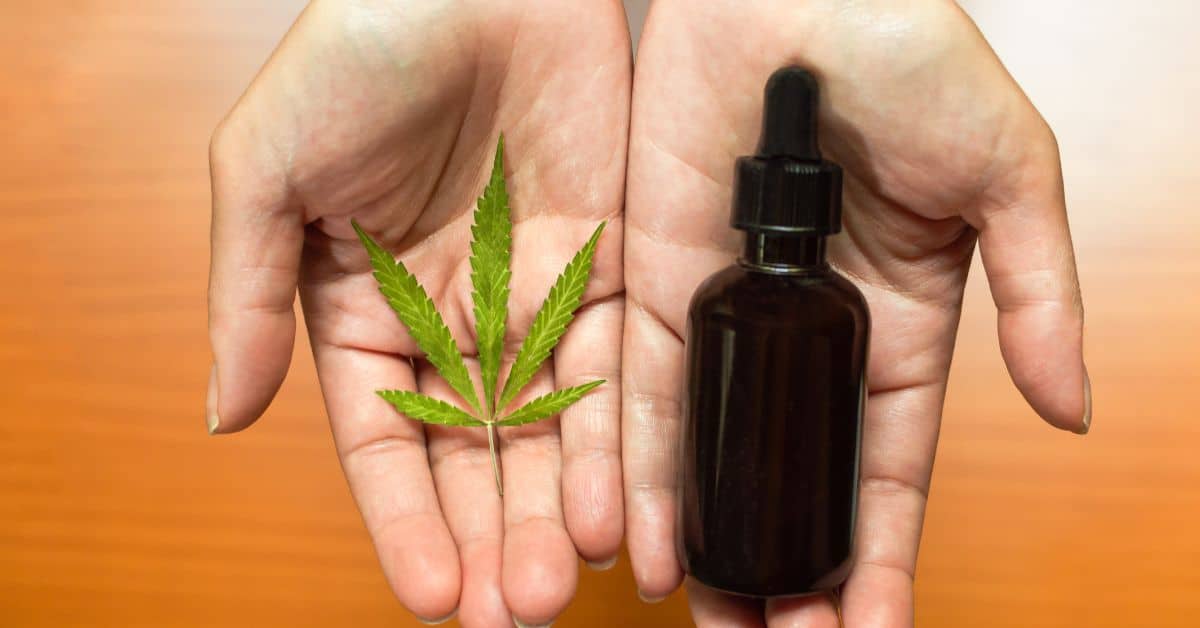
Decarboxylation Process
THCa (tetrahydrocannabinolic acid) is a non-intoxicating compound found in raw cannabis. THC (tetrahydrocannabinol), on the other hand, is the main psychoactive component that produces the “high” sensation. THCa must undergo a process called decarboxylation to convert it into THC. This occurs when the cannabis is exposed to heat, such as smoking or vaporizing. During decarboxylation, the carboxyl ring present in THCa is removed, changing its chemical structure to form THC.
Dabbing, a method of cannabis consumption, involves heating cannabis concentrates like wax or oil on a hot surface and inhaling the vapor produced. This process effectively decarboxylates THCa, turning it into psychoactive THC. In a preliminary investigation, the high lung availability of THC during dabbing was found to contribute to the increased psychoactive and adverse effects.
Psychotropic Properties
The psychotropic properties of THC arise from its ability to bind to cannabinoid receptors present in the brain and nervous system. Unlike THC, THCa does not have intoxicating or psychoactive effects. This is because the carboxyl ring in THCa prevents the compound from binding to cannabinoid receptors. Once the carboxyl ring is removed, and THCa is decarboxylated to form THC, it can interact with these receptors and produce a “high”.
Dabbing THCa offers increased potency and faster onset of effects due to its high concentration compared to traditional cannabis consumption methods. The high potency of decarboxylated THC in dabs can lead to more significant psychoactive effects, making it essential for users to be cautious with dosage and ensure proper safety measures are in place.
In conclusion, dabbing THCa can indeed get you high, as the decarboxylation process converts the non-intoxicating THCa into psychoactive THC, responsible for producing the high sensation.
Benefits of THCa
THCa (Tetrahydrocannabinolic acid) is a non-psychoactive compound found in raw cannabis plants. While it does not produce the “high” associated with THC, it offers a range of health benefits which are gaining attention in the medical community.
Anti-Inflammatory Effects
THCa has been studied for its potential anti-inflammatory properties. This compound interacts with the body’s endocannabinoid system, which plays a vital role in regulating various processes, including inflammation. THCa may help to reduce inflammation by:
- Inhibiting the production of pro-inflammatory cytokines
- Modulating the activity of immune cells responsible for inflammation
These effects make THCa a promising candidate for treating inflammatory conditions such as arthritis, inflammatory bowel disease, and skin disorders.
Neuroprotective Properties
THCa has been found to possess neuroprotective properties, which could be useful in the treatment of neurodegenerative diseases. It is thought to:
- Reduce oxidative stress: Oxidative stress is a key factor in the development of neurodegenerative diseases like Alzheimer’s and Parkinson’s. THCa may help protect neurons by reducing the production of harmful free radicals.
- Protect against excitotoxicity: Elevated levels of glutamate in the brain can lead to the death of neurons. THCa may help prevent this excitotoxicity by regulating glutamate levels.
Anti-Nausea Effects
THCa has demonstrated anti-nausea and antiemetic effects, making it a potential treatment option for individuals suffering from nausea and vomiting. This could be particularly beneficial for patients undergoing chemotherapy or those with chronic gastrointestinal disorders.
By targeting the body’s endocannabinoid system, THCa may help to regulate the neural pathways responsible for the sensation of nausea, thereby reducing both acute and chronic occurrences of nausea and vomiting.
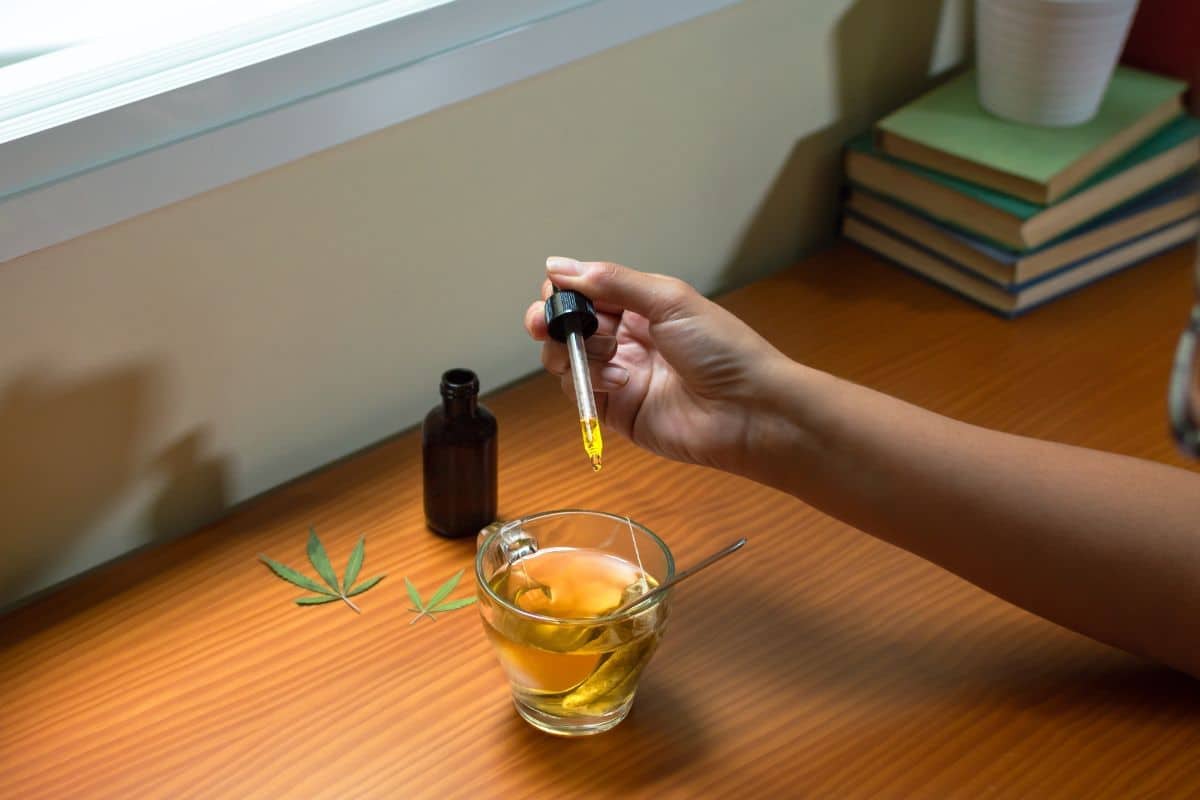
Consuming THCa
Raw Cannabis
THCa (tetrahydrocannabinolic acid) is the non-psychoactive precursor to THC found in raw cannabis plants. Consuming raw cannabis, whether it’s marijuana or hemp, does not produce the typical “high” associated with THC. Instead, the THCa present in the plant must be converted to THC through a process called decarboxylation, which occurs when the plant is exposed to heat or combustion.
Juicing and Tinctures
Juicing raw cannabis or preparing tinctures with it allows you to consume THCa without the psychoactive effects of THC. This method preserves the plant’s natural compounds and offers various health benefits due to the presence of cannabinoids, terpenes, and other nutrients. However, it’s essential to note that consuming THCa through juicing or tinctures won’t result in a “high” as the THCa remains unconverted to THC.
Cooking and Baking
When cannabis is used for cooking and baking, the THCa present in the plant undergoes decarboxylation, converting to THC and producing psychoactive effects. To achieve this conversion, cannabis flower or hemp flower must be heated at an adequate temperature for a certain duration of time. For instance, the process of baking brownies that contain cannabis-infused butter or oil will lead to decarboxylation and turn THCa into the psychoactive THC compound. In this case, consuming the baked product will result in a “high” due to the presence of THC.
In conclusion, consuming THCa in its raw form or through juicing and tinctures will not produce the typical psychoactive effects associated with THC. However, when used in cooking and baking, THCa can be converted to THC, resulting in the desired “high.”

Legality and Drug Testing
2018 Farm Bill
The 2018 Farm Bill significantly impacted the legality of cannabis and its derivatives in the United States. This legislation removed hemp, defined as cannabis with less than 0.3% delta-9 THC, from the list of controlled substances. It is important to note that this change in federal law is specific to hemp and does not legalize marijuana, which remains a schedule 1 controlled substance. Tetrahydrocannabinolic acid (THCa), a non-psychoactive precursor of THC, is not explicitly mentioned in the Farm Bill.
Total THC
The term “Total THC” refers to the combination of delta-9 THC and its acidic precursor, THCa. Although THCa itself is not intoxicating, it can be converted into THC when exposed to heat, such as during the process of dabbing. This conversion is known as decarboxylation1. The distinction between THC and Total THC is essential for understanding the federal legal status and drug testing implications of various cannabis products.
Drug Tests
Drug tests are designed to detect the presence of THC or its metabolites in the body, indicating the consumption of cannabis. Since THCa can be converted into THC when exposed to heat, dabbing THCa can potentially result in a positive drug test. However, it should be noted that drug tests are typically not sensitive enough to detect non-intoxicating cannabinoids such as CBD or other minor cannabinoids2. As a result, while dabbing THCa could lead to a positive drug test, its detection may depend on the test’s sensitivity and the individual’s metabolism.
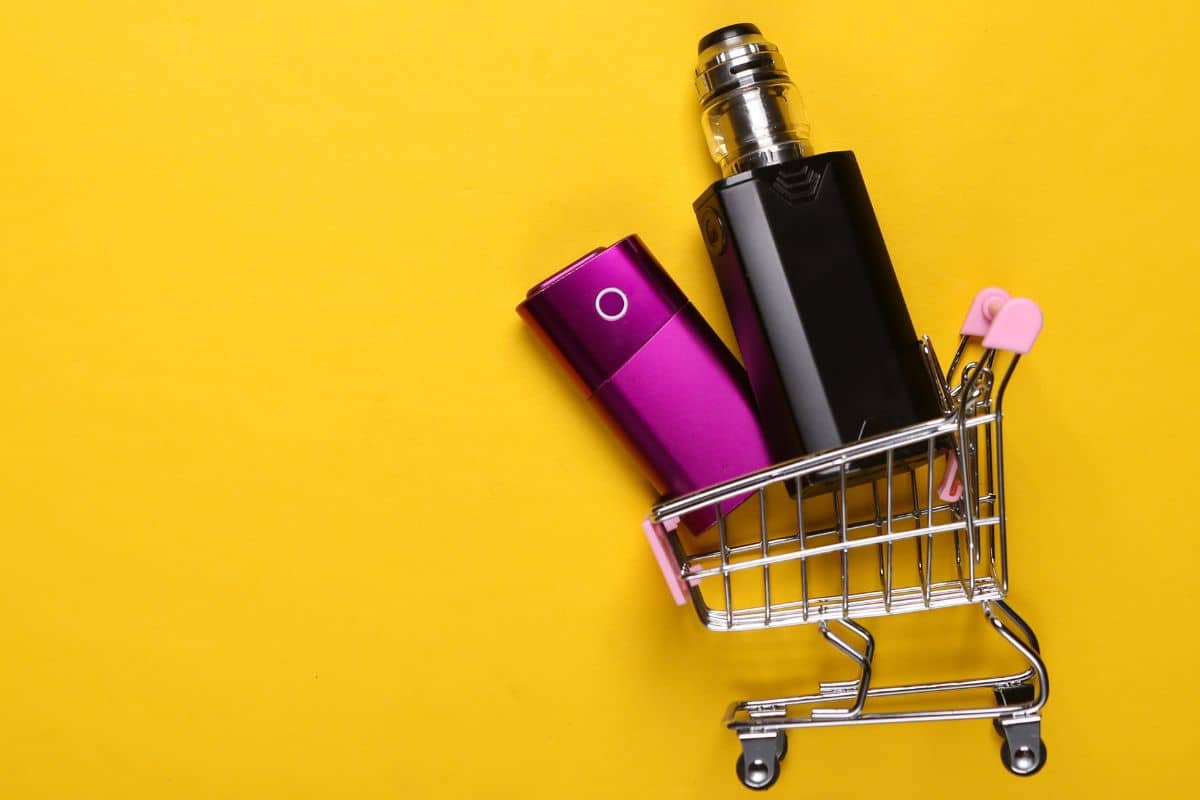
THCa in the Cannabis Market
Guild Extracts and Isolate
THCa, or Tetrahydrocannabinolic Acid, is a non-psychoactive compound found in raw cannabis plants. It is the precursor to THC, the well-known psychoactive compound responsible for the “high” users experience when consuming cannabis products. Companies like Guild Extracts have developed processes to isolate and purify THCa, making it available in the form of crystalline structures, such as THCa isolate. This product is known for its high potency and purity, often exceeding 99% THCa concentration.
Dosing and Potency
When discussing dosing and potency, it’s essential to understand that THCa does not produce a psychoactive effect. However, when exposed to heat, it undergoes a process called decarboxylation, converting it into THC. This is what occurs when users smoke or vaporize cannabis products, such as dabbing.
Dabbing involves heating a concentrated form of cannabis—like THCa isolate—on a hot surface and inhaling the vapor. Since THCa isolate is exceptionally potent, users should be cautious with dosage. It is recommended to start with small amounts and gradually increase the dose until the desired effect is achieved.
The potency of the THCa isolate can be both an advantage and a challenge. On one hand, it allows users to control and customize their dosage more accurately. On the other hand, the high potency increases the risk of overconsumption, leading to possible side effects such as dizziness, anxiety, and increased heart rate.
In summary, THCa is a non-psychoactive compound found in the cannabis market that converts to THC when exposed to heat. Companies like Guild Extracts have developed methods to isolate THCa, providing users with a potent product for dabbing. Careful dosing and knowledge of the isolate’s potency are crucial in ensuring a safe and enjoyable experience.
Side Effects and Precautions
Dabbing is a method of consuming cannabis concentrates, and THCa is a non-psychoactive cannabinoid found in raw cannabis plants. When dabbing THCa, it’s essential to know the potential side effects and take necessary precautions to ensure your safety.
One thing to be aware of is that THCa itself will not get you high because it lacks psychoactive properties. However, when heated, THCa converts to THC, the psychoactive component of cannabis responsible for euphoric and intoxicating effects. So, dabbing THCa at high temperatures can lead to a psychoactive experience.
When consuming THCa, some potential side effects may include dry mouth, dizziness, increased heart rate, paranoia, and panic. These effects are generally milder than those experienced with THC, but it’s essential to be cautious and aware of your own body’s reactions.
To minimize the risks, consider the following precautions:
- Start with a low dose and gradually increase: This will help you gauge your tolerance and avoid potential adverse reactions.
- Consume in a comfortable, familiar environment: This can help prevent paranoia and panic if you experience unexpected effects.
- Stay hydrated: Drinking water can help combat dry mouth and alleviate some of the dizziness associated with cannabis consumption.
- Avoid combining with other substances: Mixing THCa or other cannabinoids with alcohol, stimulants, or depressants can lead to unpredictable and potentially harmful effects.
In addition to some possible side effects, THCa also offers potential health benefits. Research suggests that it may possess anti-inflammatory, neuroprotective, and antiemetic properties, providing relief from pain, inflammation, and nausea. However, more studies are needed to fully understand the extent of THCa’s therapeutic potential.
In conclusion, dabbing THCa can be a unique way to experience the potential health benefits of cannabis without the psychoactive properties of THC. However, it’s vital to be aware of the possible side effects and take necessary precautions to ensure a safe and enjoyable experience.
Frequently Asked Questions
What type of high is THCa?
THCa (tetrahydrocannabinolic acid) is a non-psychoactive compound found in raw cannabis plants. It does not produce a high when consumed in its natural form. Only when THCa is heated and decarboxylated into THC, it becomes psychoactive and can produce the typical “high” associated with cannabis use.
How potent is THCa?
As THCa is not psychoactive, it doesn’t induce a high, and the term potency isn’t applicable in this context. Once THCa is converted to THC through decarboxylation, the potency of the resulting THC would depend on the concentration of THCa initially present in the cannabis plant.
What is the effect of THCa?
Although THCa doesn’t have the psychoactive properties of THC, it has been linked to various potential health benefits. Some research suggests that THCa could have anti-inflammatory, neuroprotective, and anti-nausea properties. It’s important to note that more research is needed to fully understand the effects of THCa.
What is the best way to consume THCa?
To consume THCa without converting it to THC, you can consume raw cannabis, such as juicing fresh cannabis leaves. However, if you’re seeking the psychoactive effects of THC, you’ll need to heat the THCa through smoking, vaping, or cooking with cannabis to decarboxylate it into THC.
Does heating THCa change its effects?
Yes, heating THCa changes its effects by converting it to the psychoactive compound THC. When exposed to heat through processes like smoking, vaping or cooking, THCa undergoes decarboxylation, resulting in THC and its associated psychoactive effects. This is further explained in a study on cannabinoid decarboxylation rates.
Can you achieve a high from ingesting THCa?
No, ingesting THCa in its natural, unheated form will not produce a high, as it is not psychoactive. In order to experience the psychoactive effects associated with THC, THCa must be heated to convert it into THC.
Footnotes

